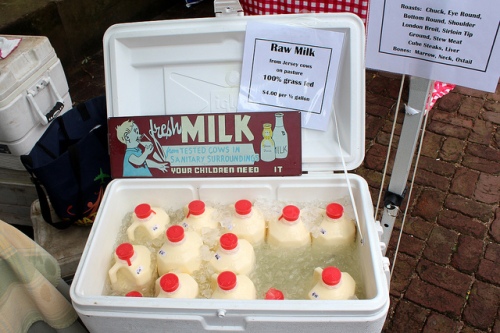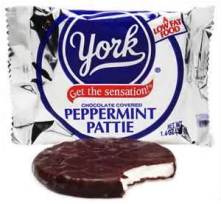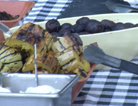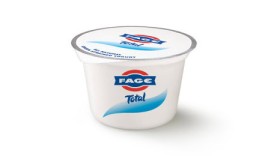Local Food Ordinances by Amy Guptill

Charleston Farmers Market – Sea Islands Jersey Raw Milk. Photo credit: Wally Gobetz. Creative Commons license.
I recently returned from the 2013 joint annual conference of the Agriculture, Food
and Human Values Society and the Association for the Study of Food and Society, and my brain is abuzz with a presentation I saw by Hilda E. Kurtz, a geographer at the University of Georgia.
A native Mainer, Kurtz is studying “Local Food and Community Self-Governance” ordinances that ten towns in Maine and eight in Vermont have passed since 2011, defining and affirming food sovereignty at the local level. As we noted in Food & Society, food sovereignty was defined by La Via Campesina, an international peasant coalition, as “the right of peoples to healthy and culturally appropriate food produced through ecologically sound and sustainable methods, and their right to define their own food and agriculture systems.” These ordinances take those principles local.
Kurtz showed us the preamble to the ordinances, as captured in this template:
Section 3. Preamble and Purpose. We the People of the Town of (name of town) ,
(name of county) County, Maine have the right to produce, process, sell, purchase and
consume local foods thus promoting self-reliance, the preservation of family farms, and local food traditions. We recognize that family farms, sustainable agricultural practices, and food processing by individuals, families and non-corporate entities offers stability to our rural way of life by enhancing the economic, environmental and social wealth of our community. As such, our right to a local food system requires us to assert our inherent right to self-government. We recognize the authority to protect that right as belonging to the Town of (name of town).
We have faith in our citizens’ ability to educate themselves and make informed decisions. We hold that federal and state regulations impede local food production and constitute a usurpation of our citizens’ right to foods of their choice. We support food that fundamentally respects human dignity and health, nourishes individuals and the community, and sustains producers, processors and the environment. We are therefore duty bound under the Constitution of the State of Maine to protect and promote unimpeded access to local foods.
Interestingly, the ordinances define local food systems in terms of tradition and a “rural way of life,” not just as localized transactions. They also, notably, situate individuals’ “right to foods of their choice” within a collective right to self-governance. In supporting this effort begun by local activists, Food for Maine’s Future is explicitly aligning their work with that of La Via Campesina.
Food for Maine’s Future has deepened the global connection by coining the slogan “We Are All Farmer Brown” to rally support for local food sovereignty around the case of Dan Brown, a farmer who was sued by the state of Maine for selling raw milk without a license. Readers may recall from Food & Society the global rallying cry “We Are All Lee,” commemorating a Korean farmer who publically committed suicide at the 2003 ministerial meetings of the World Trade Organization after holding a banner saying “The WTO kills farmers.” With these slogans, both La Via Campesina and Food for Maine’s Future assert that food sovereignty denied is an injury to all.
Despite a strong Home Rule constitution, these ordinances do not necessarily carry the day in the courtroom. Farmer Dan Brown had asked the court to dismiss the state’s suit, claiming that the food sovereignty ordinance passed by Blue Hill, ME legalizes his sales under Home Rule. In April 2013, the court found for the state, calling it “axiomatic that municipalities may only add to the requirements of the [state milk licensing] statute, it may not take away from those requirements unless permitted to do so otherwise.”
Farmer Brown and supporters lost that round; however, recent Maine legislation may soon allow small-scale milk producers to sell directly to consumers without a license. While their legal power is uncertain, the ordinances do seem to serve as powerful statements of public will.
I can’t wait to read Kurtz’ work on this case. Like her earlier papers, it promises to show how disputes about food reveal some of our most fundamental assumptions about citizenship, community, and knowledge itself.
Squirrel-Hunting as Food Taboo by Amy Guptill
Holley, NY, a small, quiet village of 1800 people, lies just west of Brockport on the Erie Canal. Recently, it has gotten international attention for a controversial fundraiser hosted by the local volunteer fire department. The seventh annual Hazzard County Squirrel Slam was a one-day hunting competition in which two-person teams competed to bag the heaviest single squirrel or the largest total catch of up to five squirrels. Winners took home cash prizes (from $50 to $200) and all competitors were entered into a raffle to win one of five rifles or shotguns. Only holders of valid hunting licenses can participate.
The event was jokingly named after the fictional Appalachian county that was home to the protagonists of the 1980s CBS series The Dukes of Hazzard (there is no Hazzard County, NY). And targeting squirrel – rather than a more high-status species like deer or turkey or trout – gives the event a playful image.
The first six Squirrel Slams came and went with little outside attention (or inside attention for that matter), but the seventh was met with criticism from as far away as the UK. Several facebook pages and online petitions called on the Holley Fire Department to call off the event. Thousands of phone calls, emails,and other communications flooded into the Fire Department and local government. Many critics, including a blogger for Psychology Today, decry the gun-focused nature of the competition and the fact that there is now a division for hunters 12-14 years old.
There was even an effort to raise a large donation to offer the Fire Department in exchange for cancelling the event. The fundraising succeeded; the deal did not. The leader of the fundraising effort told the Los Angeles Times this: “The town clerk told me, ‘You don’t understand, every official in this village is 100% behind this event. Our values, our way of life, our culture, is about hunting.’ I’m pretty sure if we had offered $100,000, they wouldn’t have canceled it.”
It isn’t really about the squirrels or the eating of squirrel meat. One newspaper blogger argues that the Squirrel Slam controversy reveals a social class divide, one in which the fault line runs along an urban/rural boundary. He posits: “Maybe much of the revulsion about Squirrel Slam has less to do with the squirrels and more to do with people hunting them.” He writes that the criticisms he has read “amount to little more than ‘look at these gross people being gross.’”
Anthropologist Mary Douglas, a foundational thinker in food studies, was among the first to explore how food taboos reveal the ways people infuse food and food practices with symbolic meaning in an ongoing project of asserting cultural values and distinguishing insiders from outsiders.
Most scholars of taboo have focused on forbidden foods; but, in this case it isn’t eating squirrel meat that is divisive. It’s hunting. Squirrel Slam opponents portray the event as killing just for entertainment. Proponents claim that it reasserts the values of a resourceful, rural culture and that it doesn’t need to have a sacred tone to have an important cultural benefit. Thus it seems that the concept of food taboo applies not just to eating but also to foodways as a whole: patterns that encompass the practices and meanings of food acquisition and preparation as well.
Despite the protests, the Seventh Annual Hazzard County Squirrel Slam went on as scheduled, with over 100 demonstrators carrying signs and chanting slogans at the Fire Hall. Supporters of the event also made their views known through counter-demonstrations and the conspicuous display of dead squirrels as well as through quieter means. All 1000 tickets were sold, 400 more than the prior year, and it seemed that not all ticket-buyers actually hunted. The Holley Fire Department hasn’t announced results, but the proud parents of the youth-division winner, 13-year old Erica Kotarski, were sure to notify their local paper of her victory. The protests may have only deepened their pride.
‘Get the Sensation…’ by Denise Copelton
 I don’t know about you, but I’m really tired of television commercials modeled after pornography—food porn, that is. The latest one I’ve been repeatedly subjected to is a television commercial for York Peppermint Pattie. It features an attractive young white woman tearing open a Peppermint Pattie, breaking it apart, biting into it, and relishing in the ecstasy that follows. Complete with ‘money shots’ of the candy itself, it has all the makings of food porn including close-ups of the actress lustfully anticipating the first bite, slowly opening her mouth, and licking her lips in satisfaction. The sultry female voice over coos, “The chill of peppermint, the rich dark chocolate. York Peppermint Pattie–get the sensation.” The current ad is only the latest in a series of similarly styled ads, each one featuring close-up shots of different, but equally attractive, actresses passionately eating the candy. There are two others featuring white actresses, one with short hair and one with a bob, and one featuring a woman of color.
I don’t know about you, but I’m really tired of television commercials modeled after pornography—food porn, that is. The latest one I’ve been repeatedly subjected to is a television commercial for York Peppermint Pattie. It features an attractive young white woman tearing open a Peppermint Pattie, breaking it apart, biting into it, and relishing in the ecstasy that follows. Complete with ‘money shots’ of the candy itself, it has all the makings of food porn including close-ups of the actress lustfully anticipating the first bite, slowly opening her mouth, and licking her lips in satisfaction. The sultry female voice over coos, “The chill of peppermint, the rich dark chocolate. York Peppermint Pattie–get the sensation.” The current ad is only the latest in a series of similarly styled ads, each one featuring close-up shots of different, but equally attractive, actresses passionately eating the candy. There are two others featuring white actresses, one with short hair and one with a bob, and one featuring a woman of color.
Another recent example is a series of commercials for Lay’s Potato Chips. There are at least two versions that I’ve seen. The video is the same in both ads, but set against different pieces of music, the effect is very different. The sexier of the two features Al Green’s soulful “Let’s Stay Together,” while the other more playful version is set to Queen’s “Crazy Little Thing Called Love.” Both feature an attractive white woman holding a Lay’s bag, slowly opening it, and removing and then consuming a single chip. Close-ups of the actress’s facial expressions as she slowly procures the chip evoke a flirtatious courtship ritual: she bats her eyes demurely, smiles coyly, and bites her lip in anticipation of the salty goodness she is about to partake. Like the Peppermint Pattie commercial, there are plenty of sexy close-ups of the chips as well as the actress. The narration and text at the end of the commercial claims, “one taste and you’re in love.”
I have to admit that I much prefer the old Peppermint Pattie ads, the ones featuring ordinary people in ordinary circumstances who comically describe the fantastic sensation they get when they bite into the candy. The narration always went something like this, “When I bite into a York Peppermint Pattie I get the sensation of…” This was always followed by the main character describing some extraordinary physical and emotional fantasy experience like being launched off an Olympic-style ski jump or luge, or winning a figure-skating championship. These commercials didn’t take themselves too seriously and that was part of their charm.
Two things set the modern Peppermint Pattie and Lay’s commercials apart from their predecessors: their heavy reliance on women, and the sharp focus on the faces of the actresses. First, since these ads are meant to be playfully evocative of sex, it is no surprise that most feature women. To be fair, there is at least one Peppermint Pattie ad that I know of that features an attractive white male. But I’ve only ever seen it on You Tube, as a result of searching for examples of ads to link to this post. I have never actually seen it on TV, although I have seen three of the four Peppermint Pattie ads that feature women on TV. I have to wonder if this is because ads depicting men in food porn fashion just aren’t as effective—if men lusting after candy and chips appears comical instead of sexy and alluring. In the popular imagination women have long been linked to chocolate as a prelude to romance (think Valentine’s day) and to junk food of all kinds as a sinful indulgence (think dieting). These associations are what make the ads work—so that it is almost believable that women are enraptured by eating the romantic chocolate-covered pattie or the high fat chip.
Second, the actresses’ faces, particular facial features and expressions are all shot in extreme close-up. In some segments, just the lips or eyes are shown, not unlike the focus on body parts in much pornography. Though pleasurable grunts and moans are absent here, the face shots more than adequately convey the orgasmic experience that eating a York Peppermint Pattie or Lay’s potato chip supposedly elicits. The extreme close-ups of the actresses’ faces and the foods fetishize both.
Granted, the old ads didn’t make me want to buy or eat a Peppermint Pattie, but then neither do the new ones. Now don’t get me wrong—I like a good candy bar on occasion, although Peppermint Pattie has never ranked high on my list of favorites. I’m just not a fan of the candy and, having gotten sick as a child from eating too many potato chips in one sitting, I don’t much care for potato chips either.
But that I dislike the products being advertised is not the real reason I dislike these commercials. I think my dislike stems from the style of both ads. All advertising attempts to connect emotionally with the viewer (the old Peppermint Pattie ads did this through humor); but these new ads focus so intensely on the emotions of the actresses that they just strike me as ridiculous. Clearly no real person eats either of these foods with the gusto portrayed in these ads, a fact that is probably also true of most food advertising. But even that doesn’t bother me much, as it is something I expect of all commercials. Maybe it’s just their pornographic nature. Maybe they just take themselves far too seriously–something that makes them ripe for parody. It is well worth watching the Peppermint Pattie ads on You Tube and then several of their parodies. This one is my favorite. I couldn’t stop laughing at the parodies, which highlight perfectly the ads’ absurdities. Even if I don’t enjoy the ads (and I clearly don’t), their parodies still allow me to enjoy the spectacle they create. And after all, spectacle is the essence of food porn.
The College at Brockport Farm to Table Dinner
I just cam e across this brief video about a Farm to Table Dinner hosted by The College at Brockport this past October. The video features interviews with two of the chefs at the College and explains dining services’ efforts to source food locally. One local apple farm (Robb Farm in Spencerport, NY) is highlighted.
e across this brief video about a Farm to Table Dinner hosted by The College at Brockport this past October. The video features interviews with two of the chefs at the College and explains dining services’ efforts to source food locally. One local apple farm (Robb Farm in Spencerport, NY) is highlighted.
Enjoy!
-Denise
Reflections on the Market for Baby Yogurt by Denise Copelton
As the parent of an infant, I find myself increasingly poring over food labels while grocery shopping, as I introduce more solid foods. I opted not to purchase ready-made jarred baby food, not necessarily because I view jarred food as inferior (frankly, I don’t see much difference nutrition-wise since commercial baby food generally contains no additives), but because it is so much cheaper to make my own. I reserve jarred baby food for use when we travel, since it is easier to transport and does not require toting along a bevy of frozen food. Making my own baby food consists of steaming various fruits or vegetables (I use both fresh and frozen depending on the season), pureeing them in a blender, and freezing the puree in single servings using an ice cube tray. I pop out the frozen cubes, transfer them to a freezer bag, and pull single cubes from the freezer as needed. This has worked well for us and I feel comfortable knowing exactly what I am feeding my baby, when it was made, and how. It is more time-consuming than buying jarred baby food, but I do not find the task onerous. What I DO find onerous, however, is shopping for commercially-prepared plain yogurt that is suitable for an infant.
I introduced plain yogurt at about 6 months and my baby loves it! She’ll even gobble up foods she doesn’t like by themselves (like green beans) if I mix these with plain yogurt, which, as most parents would agree, is incredibly useful! I prefer plain yogurt for two key reasons. First, I mix it with pureed fruits, vegetables, and beans, to produce endless flavor combinations, some sweet and some savory. Second, plain yogurt has no added sugar, which pediatricians and nutritionists agree babies do not need. Pediatricians also recommend that children consume only full-fat dairy products since (unlike adults) children need the fat and calories to fuel their rapid growth.
The problem is that it is incredibly hard to find plain full-fat yogurt with no added sugar. In the area in upstate New York where I live there are two full-service grocery store chains, as well as large grocery sections in some Walmart and Target stores. Given the space devoted to yogurt in the dairy cooler, and the sheer number of flavor options available, one might think that the options for plain full-fat yogurt with no added sugar would also be numerous. Quite the contrary! None of the Walmart or Target stores with grocery sections sell it, and only one of the two mainstream grocery store chains in my area carries it. The store that does, carries only one brand and one size—a full-fat plain Greek-style yogurt sold under the brand name Fage. If I were in the market for a low- or no-fat  no-sugar-added plain yogurt, however, my choices would include both Greek and traditional style yogurt, multiple portion sizes, organic and non-organic varieties, and both brand name and generic options. And, I could find it at any of the local stores that carry yogurt. If I wanted just full-fat flavored yogurt (with added sugar) then I would also be in luck, with large selections in all stores. This sharp contrast leaves me wondering, why are there so few choices for full-fat plain no-sugar-added yogurt?
no-sugar-added plain yogurt, however, my choices would include both Greek and traditional style yogurt, multiple portion sizes, organic and non-organic varieties, and both brand name and generic options. And, I could find it at any of the local stores that carry yogurt. If I wanted just full-fat flavored yogurt (with added sugar) then I would also be in luck, with large selections in all stores. This sharp contrast leaves me wondering, why are there so few choices for full-fat plain no-sugar-added yogurt?
One possibility is that there is no consumer demand for it and so either manufacturers don’t produce it or mainstream grocery stores don’t carry it. But this explanation seems overly simplistic, especially given the considerable cooler space allotted to yogurt as a product category. More likely, the lack of available options for full-fat no-sugar-added plain yogurt is a result of joint decision-making between retailers and manufacturers via “category management.” It also probably reflects marketing trends favoring all things low-fat, with many consumers believing that low-fat versions of popular foods are healthier versions. To most consumers, yogurt already has the allure of being a “healthy” food. By slapping “low-fat” on a food label, manufacturers add significantly to yogurt’s health appeal. The low-fat claim can often also get consumers to overlook other less healthful qualities of a food–in the case of most yogurt, its high sugar content–effectively producing a “health halo.”
I could, if I choose, opt to purchase Stonyfield Organic’s YoBaby yogurt, a brand marketed specifically for infants. Not incidentally, Stonyfield is owned by Group Danone, the French food giant that makes Dannon brand yogurt. While all the stores in my area carry YoBaby, it is only available in a 4-pack of 4 ounce  single-serve containers in banana, vanilla or peach, although YoBaby also makes a blueberry and plain variety. Despite all the health claims on its label and corresponding website, including “no high fructose corn syrup” or unnatural sweeteners, the second ingredient in all of the flavored varieties is “naturally milled organic sugar.” Personally, I don’t care if the sugar is naturally or unnaturally milled, organic or not, it is still sugar and not something my baby needs. YoBaby does make a plain variety with no added sugar, but it is not sold in my area. According to the nutrition information online, the added sugar effectively doubles the sugar content of the plain variety from 6 grams per 4 ounce container (which comes from the natural sugars found in milk) to 12 or 13, depending on the particular flavor. Furthermore, there’s nothing about this yogurt that makes it especially appropriate for babies. Stonyfield makes lots of organic yogurts in a variety of flavors. What makes YoBaby different from other Stonyfield yogurts is merely the fact that it is marketed to babies, or more accurately, to their mothers. Stonyfield also markets several “3 in 1 Meals” under the YoBaby brand. These consist of combinations of yogurt and two other fruits or vegetables, essentially a ready-made version of the yogurt concoctions I’ve been making all along at home. However, all these contain added sugar as well.
single-serve containers in banana, vanilla or peach, although YoBaby also makes a blueberry and plain variety. Despite all the health claims on its label and corresponding website, including “no high fructose corn syrup” or unnatural sweeteners, the second ingredient in all of the flavored varieties is “naturally milled organic sugar.” Personally, I don’t care if the sugar is naturally or unnaturally milled, organic or not, it is still sugar and not something my baby needs. YoBaby does make a plain variety with no added sugar, but it is not sold in my area. According to the nutrition information online, the added sugar effectively doubles the sugar content of the plain variety from 6 grams per 4 ounce container (which comes from the natural sugars found in milk) to 12 or 13, depending on the particular flavor. Furthermore, there’s nothing about this yogurt that makes it especially appropriate for babies. Stonyfield makes lots of organic yogurts in a variety of flavors. What makes YoBaby different from other Stonyfield yogurts is merely the fact that it is marketed to babies, or more accurately, to their mothers. Stonyfield also markets several “3 in 1 Meals” under the YoBaby brand. These consist of combinations of yogurt and two other fruits or vegetables, essentially a ready-made version of the yogurt concoctions I’ve been making all along at home. However, all these contain added sugar as well.
While the merits of buying organic yogurt are debatable, particularly when produced by a large multinational corporation like Danone whose production practices are probably just a slightly greener variety of conventional industrialized practices, YoBaby has one clear advantage over the Fage brand I have been buying: price. At my local grocery store that carries both items, YoBaby costs just $2.49 a pound, while Fage costs $3.49 for a 17.6 ounce container or $3.17 per pound. Greek-style yogurt is all the rage right now, which is likely what leads to Fage’s higher price point, even for a nonorganic. Still, it is a price I’m willing and able to pay to minimize the amount of sugar in my baby’s diet.
I could also make my own yogurt, which I have done before. Yogurt is not particularly difficult to make—one simply needs milk and live yogurt cultures (most people use a small amount of commercial yogurt to start out, and then use their own homemade yogurt for this purpose). I made it in my slow cooker when I was feeling particularly adventurous a few summers ago. Recipes abound online. Now, I know homemade yogurt enthusiasts will hate me for what I am about to say, but I found it just wasn’t worth the effort. After factoring in both the cost of milk and the amount of yogurt produced, making my own wasn’t much cheaper than buying it ready-made. I also didn’t find much difference in the taste. However, the texture of commercially-prepared yogurt was superior to my homemade, mainly because it was so much thicker. Granted, I could have strained the yogurt several times to make it thicker, but frankly, it was messy and time consuming and significantly reduced the overall amount of yogurt produced. Skeptical readers are by now, no doubt asking, ‘You’ll make your own pureed baby food, but not your own yogurt?’ Yes, because steaming and pureeing fruits and vegetables is for me a lot quicker, and involves significantly less clean-up than making and then straining homemade yogurt. I should also emphasize that my homemade yogurt was very runny.
So I decided that yogurt making just wasn’t for me–this is one domestic task that I am more than happy to outsource. But in doing so, it means I am at the mercy of the market. Should my one local store elect to no longer carry the one brand of full-fat no-sugar-added plain yogurt they do currently sell, I will either have to expand my search to specialty markets such as health food stores or make my own. In either case, it would significantly increase my domestic workload via special shopping trips to a health food store 30 minutes from my home, or via the work of yogurt making. I could also lower my standards and feed my baby the much more easily obtainable low-fat no-sugar-added plain yogurt or the organic full-fat but sugary “baby yogurt.” But lowering my standards doesn’t sit quite right with me, knowing that the health of my baby and the development of her taste preferences rest at least partly on these early feeding decisions.
Clearly, as my quest to find a yogurt appropriate for an infant demonstrates, feeding work entails making lots of trade-offs including those concerning a food’s price, taste, and texture, how easy or difficult it is to make or obtain in the marketplace, and its health benefits. For now, at least, I will continue to feed my baby the one brand of full-fat no-sugar-added plain yogurt available at my local grocery store and hope that the manufacturer continues to produce it, the store continues to sell it, and the price doesn’t increase beyond my budget.
Welcome to the Food & Society blog!
Welcome to the Food and Society blog! This is a companion blog to the textbook by Amy Guptill, Denise Copelton, and Betsy Lucal. We believe the blog will be of interest to students and professors using the text, as well as others with an interest in food issues. Our goal is to offer timely and engaging posts that refl ect our emerging thoughts on various issues related to food and society that tie in with ideas discussed in more detail in one or more chapters of our book. We hope that course instructors will find the blog useful for sparking class discussions, as supplemental readings to specific textbook chapters, or as the basis for class writing assignments. We aim to create a lively and informative venue for online discussion and invite readers’ feedback. Whether you are reading this blog for class or just for fun, we hope you’ll stick around and invite others to the table!
ect our emerging thoughts on various issues related to food and society that tie in with ideas discussed in more detail in one or more chapters of our book. We hope that course instructors will find the blog useful for sparking class discussions, as supplemental readings to specific textbook chapters, or as the basis for class writing assignments. We aim to create a lively and informative venue for online discussion and invite readers’ feedback. Whether you are reading this blog for class or just for fun, we hope you’ll stick around and invite others to the table!


